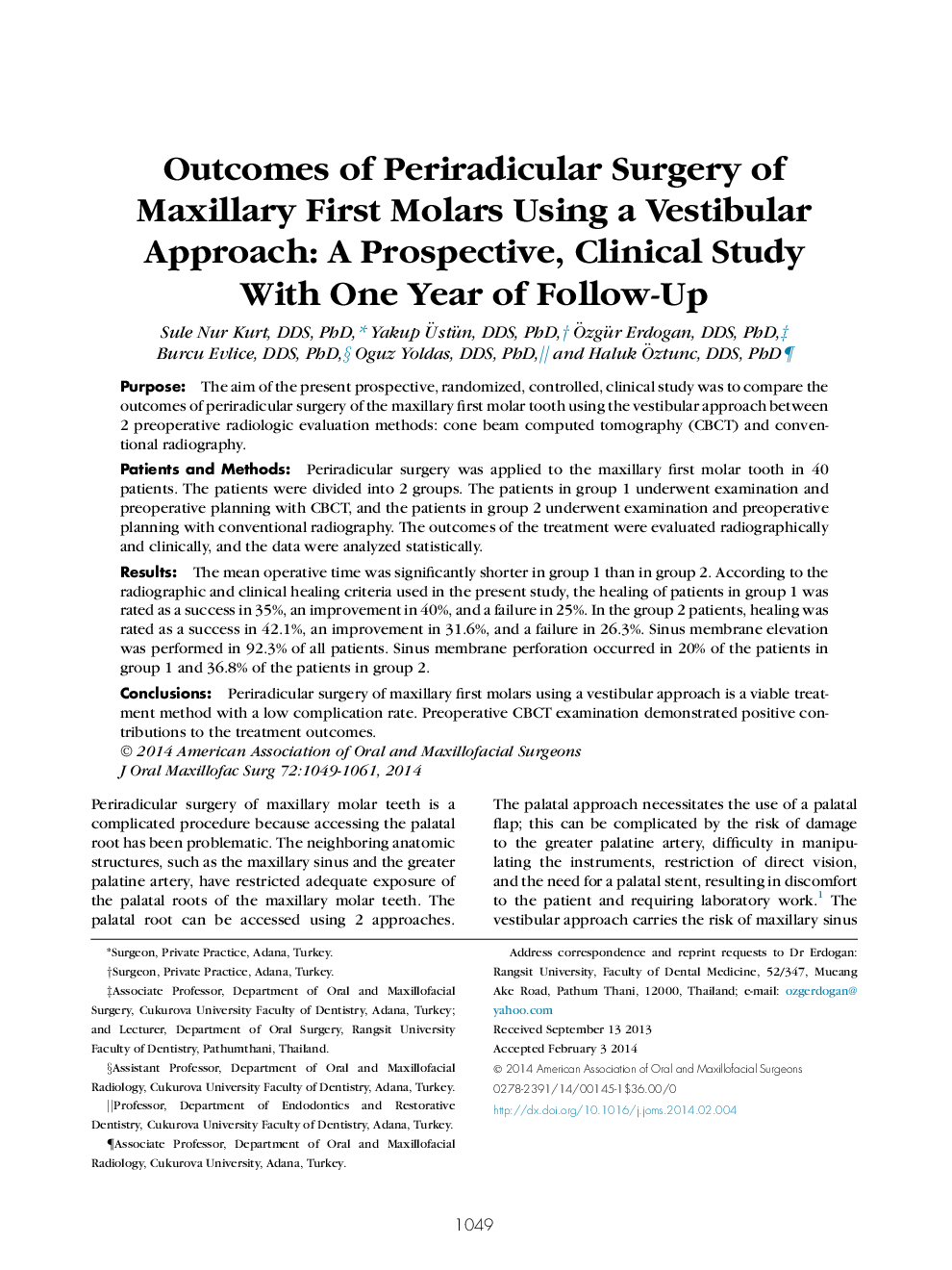| Article ID | Journal | Published Year | Pages | File Type |
|---|---|---|---|---|
| 3156294 | Journal of Oral and Maxillofacial Surgery | 2014 | 13 Pages |
PurposeThe aim of the present prospective, randomized, controlled, clinical study was to compare the outcomes of periradicular surgery of the maxillary first molar tooth using the vestibular approach between 2 preoperative radiologic evaluation methods: cone beam computed tomography (CBCT) and conventional radiography.Patients and MethodsPeriradicular surgery was applied to the maxillary first molar tooth in 40 patients. The patients were divided into 2 groups. The patients in group 1 underwent examination and preoperative planning with CBCT, and the patients in group 2 underwent examination and preoperative planning with conventional radiography. The outcomes of the treatment were evaluated radiographically and clinically, and the data were analyzed statistically.ResultsThe mean operative time was significantly shorter in group 1 than in group 2. According to the radiographic and clinical healing criteria used in the present study, the healing of patients in group 1 was rated as a success in 35%, an improvement in 40%, and a failure in 25%. In the group 2 patients, healing was rated as a success in 42.1%, an improvement in 31.6%, and a failure in 26.3%. Sinus membrane elevation was performed in 92.3% of all patients. Sinus membrane perforation occurred in 20% of the patients in group 1 and 36.8% of the patients in group 2.ConclusionsPeriradicular surgery of maxillary first molars using a vestibular approach is a viable treatment method with a low complication rate. Preoperative CBCT examination demonstrated positive contributions to the treatment outcomes.
